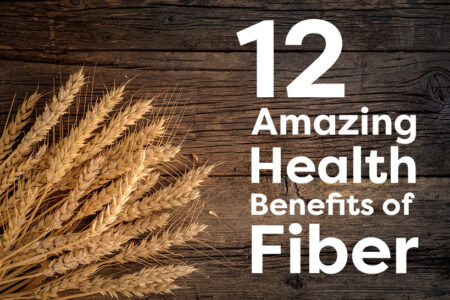Ketosis is a normal process of your body. It happens when you don’t have enough glucose for energy. Here’s how it works and what it can do for you.
For most people, carbohydrates are their primary fuel source. We have often been told that we need carbs to survive and thrive. But as it turns out, our bodies can produce an alternative fuel – one that’s clean and more efficient – ketones.
You might have some questions. How do you know when your body is in ketosis? What are some of its benefits?
This guide will show you everything you should know about ketosis. Keep reading.
What Is Ketosis?
First, let’s define ketosis. Ketosis is a natural metabolic state in which you use ketones, rather than glucose, for energy.
How can this be possible?
In most situations, people get their energy by eating more carbs. Carbohydrates are broken down into glucose. Glucose enters your cells. When you don’t use glucose, it gets stored as glycogen in your muscles and liver.
But when you restrict carbs in your diet, those glycogen stores become depleted. After that, your body burns fat. Ketones are formed as a result of fat breakdown.
Ketones cause most of the benefits that people experience on a ketogenic diet.
Can Our Body Use Ketones as a Main Source of Energy?
The answer both is yes and no. And here’s why:
Ketones move from your liver to the tissues in your body.
They cross the blood-brain barrier to fuel your brain 1. Your muscles also use them as a major energy source 2.
However, do keep in mind that some tissues cannot use ketones. These are your red blood cells (RBCs) and liver cells (or hepatocytes).
Although the liver produces ketones, it’s unable to use them because of a lacking enzyme. The liver and red blood cells need a minimum amount of glucose. Glucose is derived through a metabolic pathway called gluconeogenesis. With this process, glucose is created from non-carbohydrate sources 3.
How Is Ketosis Different from Ketoacidosis?
Ketosis and ketoacidosis do sound alike. Because of that, it’s easy to mistake one for the other.
The truth is, they’re different. Ketosis is normal while ketoacidosis is a dangerous condition.
Ketoacidosis happens when ketone production becomes out of control. While ketones rise too high, a person’s blood sugar level also rises to over 240 mg/dl.
This condition is most common in those with type 1 diabetes. Factors that trigger it include missing their insulin frequently or being exposed to too much stress. It may also happen in type 2 diabetes, but it is less likely to 4.
Drinking excessive amounts of alcohol can also lead to ketoacidosis 5.
Ketosis and ketoacidosis can oftentimes be confusing to people. In this guide, we reveal their causes and symptoms.
How Can I Tell if I’m in Ketosis?
Now that you know what ketosis is, it’s important to identify when you have achieved this metabolic state. Without knowing common ketosis symptoms, one can easily mistake it for the flu.
Don’t panic if you experience any of the symptoms below. They’re a result of your body’s transition from being a sugar burner to a fat burner.
- Ketosis Breath – This is bad breath that smells like nail polish remover. The culprit behind this is acetone, a type of ketone that exits through your breath. FYI: Acetone is a reliable indicator of ketosis 6.
- Ketosis Strips – These are paper strips that test the presence of ketones in your urine. Your body also eliminates ketones via the urine. What most people like about urine strips is that they’re fast and easy to use.
- Weight Loss – Low-carb diets are effective for losing excess weight. Study shows that a ketogenic diet can help people lose more weight than low-fat diets 7. You may also notice losing a significant amount of weight within the first few days of doing keto. This is mostly water weight.
- Short Term Fatigue – A new keto dieter may complain, “I feel so tired on keto.” Weakness and poor performance are common side effects. But these are only temporary. Once your body adapts to this new way of eating, your energy will soar.
- Appetite Suppression – Yes, ketosis suppresses your appetite. This is also one way you lose weight. Ketosis may impact the activity of appetite-regulating hormones or your gut microbiome 8.
For those who are new to ketosis, keep in mind that negative symptoms don’t last long.
There are additional symptoms that you should also take note of. We tackle them in this guide, plus simple strategies to handle them.
What Are the Health Benefits of Ketosis?
One might ask: Is it good for your body to be in ketosis?
As a normal metabolic state, ketosis can be beneficial not just in healthy individuals, but also those who are at risk for certain conditions.

- Weight Loss – This one’s an obvious benefit. Losing weight through nutritional ketosis improves various aspects of your life. Even losing 5% of your weight reduces inflammation in your body, reduces your chances of cancer, and lowers your triglycerides 9.
- Cardiovascular health – In humans, nutritional ketosis has been linked to lower total cholesterol, increased HDL levels, and reduced LDL and triglycerides. Based on this, the diet can improve one’s cardiovascular risk factors 10.
- Prevention of Type 2 Diabetes – The fact that the diet keeps your blood glucose within low and normal levels, reduces your risk of getting type 2 diabetes. A 2-year non-randomized trial also showed that long-term nutritional ketosis reversed the condition 11.
- Brain Health and Mental Clarity – For those who don’t know, the keto diet has been used in the 1920s to treat epilepsy. The diet provides the brain with an alternative energy source, which offers protection. It is often said to increase focus, improve memory, and boost brain function 12, 13.
- Prevents Metabolic Disease – Restricting carbohydrates improves 5 components of metabolic syndrome – weight, fasting blood sugar, triglycerides, HDL cholesterol, and blood pressure 14.
You might need more explanation on how a ketogenic diet brings about these benefits. We cover them in this guide along with other advantages.
How to Get into Ketosis Fast?
Here’s how to achieve ketosis within a short period of time:
- Reduce Carb Intake – Make your body stop relying on carbohydrates for energy. Limit yourself to 20-50 grams of carbs daily. For a more individualized approach, use a keto calculator to find your ideal macros.
- Consume More Healthy Fats – While reducing carbs, increase your intake of fats. Good options include MCT oil, avocados, fatty fish, nuts and seeds, whole eggs, and olive oil. Avoid fats from processed foods.
- Intermittent Fasting – This is a big one. Not everyone can tolerate fasting. But like carb restriction, it forces your body to deplete its glycogen stores so that it can tap into fat and generate ketones.
- Increase Your Physical Activity – High-intensity workouts put your body in ketosis quicker, especially if you combine them with a low-carb diet and fasting.
At the same time, only eat a moderate amount of protein. Too much protein converts into glucose, which can put you off ketosis.
We’ve also covered the steps to enter ketosis in more detail. Learn about them right here.
Does Ketosis Have Negative Effects in Your Health?
Ideally, being in a ketogenic state should be good for you.
But before you reap its health benefits, you’re expected to undergo some side effects. These include fatigue, bad breath, headaches, insomnia, diarrhea/constipation, and even high cholesterol.
These symptoms usually last from 1 day to a month (the most), depending on your body’s adjustment to your new diet.
To learn more about common ketosis side effects, check out this detailed guide.
It’s important to know that the diet is contraindicated in some conditions. For example, pancreatitis, fat metabolism disorders, and liver failure.
Also, breastfeeding women can develop ketoacidosis if they restrict carbs 15. Nutritional ketosis is probably not ideal during pregnancy and lactation.
Bottom line: Do speak with your doctor before trying the diet if you’re unsure about it – in case you have a medical condition or are taking medications.
Takeaways
Ketosis is when you utilize fats for energy instead of glucose. Carb reduction, physical activity, and intermittent fasting are some ways to speed up its process. At the same time, one should increase their fat intake.
There are a few unpleasant symptoms to expect when you’re entering a state of ketosis. They’re temporary, lasting from a few days to a month.
Is ketosis healthy? Yes, and studies show that it positively impacts your heart, weight, brain health, blood glucose, and metabolic health.
Finally, remember that although it is beneficial for many, it is not for everyone. One of the best things to do before getting started is to speak with a doctor or dietician.










![Juicing for Weight Loss: Everything You Need to Know [Plus Recipes]](/wp-content/uploads/2019/08/Juicing-for-Weight-featured-image.jpg)








